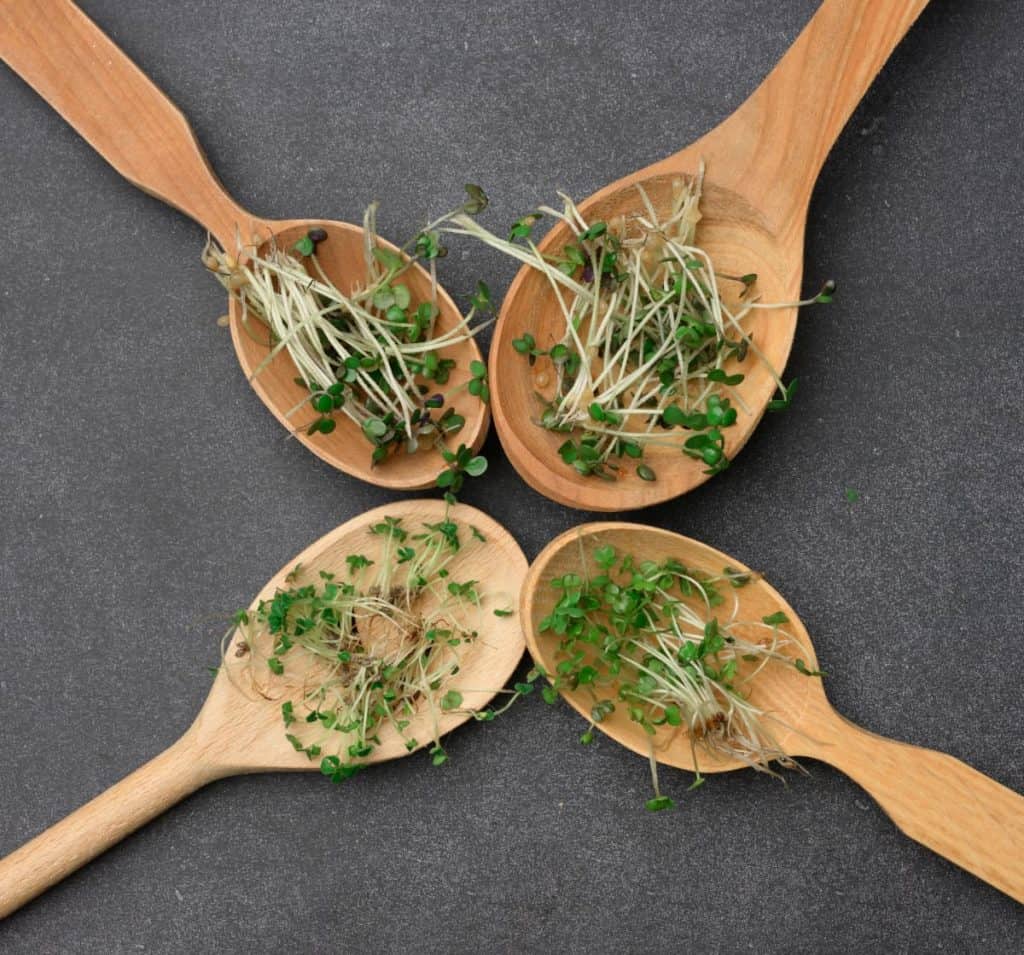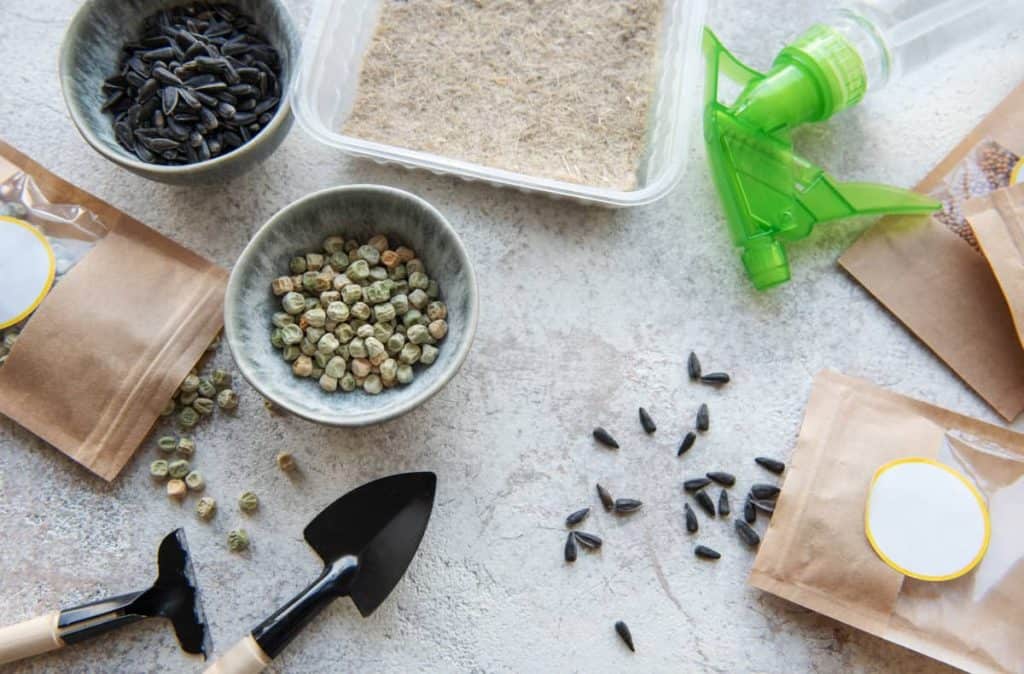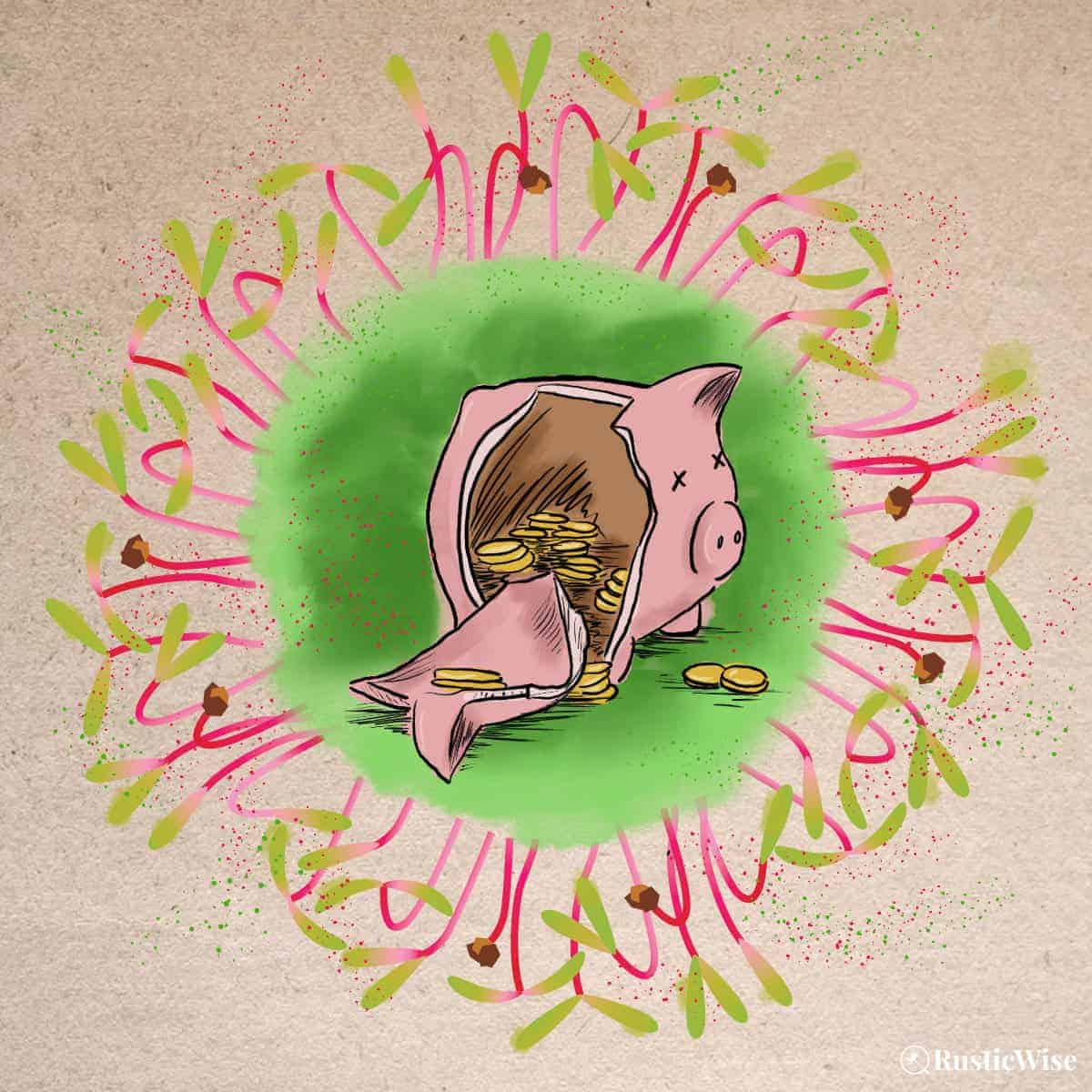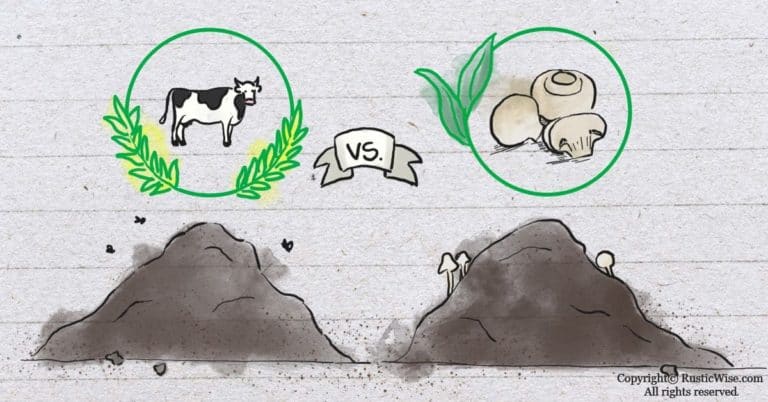Why Are Microgreens So Expensive? 5 Reasons for the High Price
Microgreens are tiny. Yet they come with hefty price tags at specialty food stores or farmer’s markets.
At first glance from a purely economic standpoint, they don’t seem like the best bang-for-your-buck. For roughly $5, you could buy a small pack of broccoli microgreens (50 grams). Or, for that price, you could get a sack of potatoes that would last for weeks.
Why are microgreens so expensive? There are several factors at play. One reason is that these tiny greens are fragile and must be grown and kept at optimum conditions, from sowing and harvesting, to shipping. Another reason is this crop requires a lot of seeds. And from a marketing standpoint, micros are billed as a superfood brimming with nutrients—and many will shell out for that.
Let’s take a closer look at what’s needed to grow these fast-growing crops at home. Plus, we’ll look at 5 key factors that drive up the price of microgreens.
A closer look at microgreens
What are microgreens? They are miniature plants harvested before they mature. Microgreens are typically harvested when they are between 1 and 3 inches (3–8 centimeters) tall.
With much shorter grow cycles than fully grown crops, many micros are ready to harvest in less than 2 weeks.
Why harvest these plants so early? Microgreens are harvested at the earliest stage of life, which helps bring out more nutrients from the plant. The seed leaves (aka cotyledons) are packed with nutrients. A study has found that microgreens contain anywhere from 4 to 40 times more vitamins and carotenoids than the same leaves from mature plants.¹ Most micros contain on average 5 times more nutrients.
Use these healthy greens in dishes as a garnish, or as part of a salad mix.

How much do microgreens cost per pound?
Most growers set out rough pricing guidelines of $40 per pound of microgreen to cover the growing costs.² Of course, this is just an estimate and a tray of microgreens of a rare seed can fetch more.
So how does this compare to other healthy leafy vegetables, like kale or spinach?
Fresh kale costs roughly $2.88 per pound according to the Economic Research Service of the USDA.
Raw spinach costs about $3.83 per pound.³
What’s required to grow microgreens commercially?
If you’re growing microgreens at home, you just need a few shallow containers with drainage holes, quality potting soil (or a soilless medium), seeds, and a sunny windowsill.
However, if you want to sell microgreens commercially to turn a profit, the supplies and energy needed to maintain an optimal growing environment will drive expenses up.
Below outlines the key costs of growing microgreens for profit:
- Grow trays and lids: Often this is 1020 growing trays (10 X 20 inches) with matching lids or humidity domes.
- Growing media: Many commercial growers prefer to use soilless grow media such as coco coir, grow mats, or other hydroponic methods. The growing medium is used once as reusing it would lead to bacterial growth from the leftover tangly mess of roots.
- Grow lights: Unlike sprouts which require little lighting, anyone looking to grow micros for a living will need ample supplemental grow lights if natural light is lacking. Factor in the electrical costs of keeping on artificial lights for most of the day and you’ll quickly see costs multiply.
- Heat: Microgreens may wilt under heat or cold, which is why the indoor conditions need to stay around regular room temperature. Often heat mats are used to keep young roots toasty-warm.
- Seeds: You’ll need plenty of quality, untreated, and often organic vegetable and herb seeds.
- Air ventilation: To prevent the development of harmful bacteria, good air circulation is a must-have. Many opt for fans.
- Shelving: Shelves, tables, hanging benches—you’ll need a setup to place your precious tiny greens upon.
- Water: Let’s not forget the cost of clean water needed to nourish these tiny seedlings.

Why are microgreens so expensive? 5 reasons for the premium price tag
Now let’s get right into the list of reasons microgreens are expensive.
1: Fragile, tiny greens
There are a few reasons microgreens are a bit pricey. First, when you grow a batch of microgreens, you’re harvesting them from a very young, very tender plant. The fragile nature of micros bumps up their value.
Unlike cabbage and carrots, which are hardy vegetable crops that can withstand a touch of frost (and a bit of neglect) microgreens will wilt, shrivel, or fall over if not given proper moisture, nutrients, or adequate lighting and warmth.
2: More seeds required to produce microgreens
When you are growing micros as a business, you’ll need seeds, and plenty of ’em.
Microgreen seeds are sown at high densities in trays which produces a high-yielding crop per square foot. Depending on the type of seed and the size of seed, you can easily use between 3 and 30 grams of seed per tray (10 X 20 inch).
Now think about a large crop such as a full grown cabbage. You may only need about 3 to 5 seeds in a square foot.
And because each tray of microgreens is so valuable, microgreen growers won’t want to waste their money and time growing subpar seeds. They will invest in quality seeds with a high germination rate that are untreated.
3: Short shelf life
By nature, microgreens are a very fresh type of produce with a relatively short shelf life. These two factors mean that a quick turnaround is required from harvest to shipping (which means more labor!).
Fresh produce is always going to be more expensive than frozen or canned foods.
When each tiny green is carefully harvested with shears or a knife, they must keep it in a temperature-controlled environment (refrigerated) until it reaches the shelves. This is often done within 24 hours.
This is why many commercial growers may decide to leave the greens unharvested on their original grow mats to save work and extend shelf life.
4: Rare or slow growing microgreens cost more
The variety of microgreens you have on your plate, along with its grow cycle will affect how much you pay.
For example, radish microgreens (along with broccoli, pea, and sunflower) are some of the more common microgreens and are also fast growing varieties of micros. They are ready to harvest in under 2 weeks.
Micros with slower growth cycles will cost more. Amaranth and beets have slower grow cycles and often require growing for 3 or 4 weeks.
Other seeds are more rare which drive up the price. Orach seeds can cost two to three times the cost of average seeds, for example.
5: Niche health food bursting with goodness
And last, but not least, microgreens are a niche market product. They aren’t an easy sell to many people. To the untrained eye, they may not look like much. But to someone who is interested in growing their own food, a tray full of microgreens can look like a gift from a food goddess.
The plant has more vitamins and minerals than full-grown, regular vegetables, as mentioned earlier. Plus, their range of colors from crimson to pale green, along with flavors ranging from mild to spicy make microgreens a highly desirable product for fancy restaurants, foodies, and anyone looking for a healthy leafy green alternative.
Microgreens are touted as a superfood due to the high concentrations of vitamins, minerals, and antioxidants for relatively low caloric consumption. They are great for weight loss diets or for those who just want to eat healthier and more nutrient-dense foods.
And we all know that a certain segment of people are willing to pay a premium for healthier foods.
Learn to grow your own microgreens
Did you know growing your own microgreens can be cheaper than buying them? If you’re looking to grow fresh food for your family, you can easily get started by repurposing shallow containers you have around the house. Things such as food-safe takeout containers with drainage holes poked in are great starting vessels.
The great thing about growing microgreens is that you don’t need a lot of space. You can start off with a sunny windowsill and expand from there. Harvest microgreens as you need for nutrient boost.
👉 If you like this post, see our Complete Guide to Growing Microgreens at Home. 🌱
Would you like more timeless tips via email?
Fun tips to help you live an independent, self-sustaining lifestyle. Opt-out at any time.


References
- Lester, Gene & Xiao, Zhenlei & Luo, Yaguang & Wang, Qin. (2013). Microgreens: Assessment of Nutrient Concentrations. Journal of Agricultural and Food Chemistry. Accessed November 2022.
- Economic Research Service (U.S. Department of Agriculture), Fruit and Vegetable Prices, https://www.ers.usda.gov/data-products/fruit-and-vegetable-prices.aspx. Accessed November 2022.
- Johnny’s Seeds, Guide to Profitable Year-Round Microgreens Production, https://www.johnnyseeds.com/growers-library/vegetables/microgreens/year-round-micro-greens-production.html. Accessed November 2022.

Author: Josh Tesolin
Josh is co-founder of RusticWise. When he’s not tinkering in the garden, or fixing something around the house, you can find him working on a vast array of random side projects.









